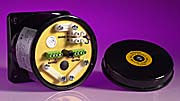It is possible to connect dis-similar secondaries in series to increase voltage provided the inter-winding break down voltage is not exceeded.I think you can connect dissimilar transformers in series or parallel for current sharing or voltage increasing with some cases requiring resistors to alter the current sharing.
Connecting dis-similarsecondaries in parallel is not a simple matter.
Almost certainly insulation breakdown as the 7.5 kV secondaries will be 30 kV and 37.5 Kv above their primaries when feeding a steady load. Using them to create arcs will create many tens if not hundreds of kV back EMFs when the arc breaks.the 7.5 units will soon short and you're back to 30 kV.



